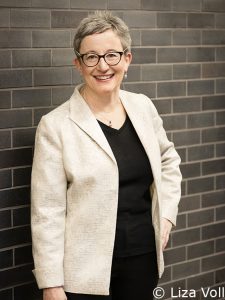Effective Summits: Turning Away for
Greater Understanding and Capacity
Rebekah Lambert, Senior Vice President and Peter Mraz, Associate Vice President
In his 1942 essay The Myth of Sisyphus, Albert Camus argued that in order to understand the world, one has to turn away from it on occasion. On a more practical level, this can also be applied to arts and culture organizations. Too often, these organizations don’t “turn away” from the ongoing work at hand, the new production or exhibit, or the latest budget crisis to focus on the big picture.[1] Board and staff leadership of arts and culture organizations rarely give themselves the luxury of time and energy to explore the most important and fundamental issues of their organizations. An effective summit provides that opportunity and much more.
With relatively little expense of human, temporal, or financial resources, a summit allows participants to concentrate on critical matters that affect the future of their organization. A summit can be used to reaffirm mission, vision, and values or to evaluate progress on a strategic plan. It can be the setting for the board to self-govern using a thorough self-assessment process. It can concentrate on a specific problem or, alternatively, encourage participants to think more broadly about the purpose and uniqueness of their organization. It can be used to educate board and staff members on a topic of critical relevance to the institution’s success, such as equity, diversity, and inclusion, or to provide needed training in key areas, such as fundraising or organizational finances.[2] A summit can also build camaraderie, team dynamic, and common purpose among organizational stakeholders.
Characteristics of an Effective Summit
Whatever its purpose, an effective summit has certain characteristics. These include:
- Relevance and a clearly defined agenda with enough flexibility to allow for meaningful discussion and to accommodate any unexpected topics of significance that may emerge;
- Concrete and actionable items with a clear plan and timeline for post-summit follow up;
- Active attendee involvement that leads to support, commitment, and consensus among summit participants;
- Creative thought and open dialogue in a collegial atmosphere; and
- Achievement of something that cannot be accomplished in the regular work and meetings of the board or staff.
It is vitally important to have a clear idea of the summit’s purpose, which “should be limited to addressing only a few issues—those with the greatest strategic priority and importance.”[3]
Who Should Be Included
Selecting the participants for a summit depends primarily on its agenda. For a planning summit, an arts and culture organization should include, at a minimum, its entire board, senior management, and artistic/curatorial leadership. For organizations with very large boards, the executive committee may suffice. Additionally, an organization should seriously consider how or when to include artists, affiliated volunteer group leadership, and other stakeholders.
In some cases, the goal of the summit may mandate particular attendance. If the agenda includes discussion of sensitive or confidential issues, participation should be limited. However, an agenda that includes discussion of a new strategic initiative, facility development, or major organizational shift may warrant the broader inclusion of neighbors, community leaders, or colleagues from other organizations to ensure diversity of stakeholder viewpoints. Essentially, anyone whose insights and valuable input would contribute to building momentum in advancing the organization should be included on the summit invitation list.
Use of an Outside Facilitator
Most effective summits use an experienced external facilitator—someone who helps the organization’s leadership plan the agenda and then objectively conducts the meeting and steers the discussion. Keep in mind that internal stakeholders acting as facilitators can be perceived as having their own agenda or subjective point of view. An effective outside facilitator will:
- Review organizational information in advance and speak with board and executive leadership to understand the dynamics of the participants (i.e. know the audience);
- Ask perceived naïve questions that help participants answer tough core questions about the “why” of the organization rather than the “how;”
- Keep the group focused on the agenda and goals of the summit;
- Provide industry benchmarks, comparisons, and expertise;
- Address difficult questions in a diplomatic manner;
- Ensure that everyone participates in the discussion and that it remains cordial and inclusive;
- Push the group beyond talk to the identification of concrete action items; and
- Prepare a post-summit summary that clearly articulates the discussion and identifies the next steps, timelines, and who is responsible for implementation.
Board Self-Assessment
A summit focused on the board of directors can often be a time of self-reflection through the utilization of a thorough self-assessment tool. The boards of arts and culture organizations need dedicated time to discuss and improve upon their own performance, separate from measuring organizational or managerial effectiveness. In fact, BoardSource “considers performance assessment key to increasing board effectiveness.”[4] Along with a myriad of other benefits, an effective board self-assessment can:
- Educate board members on their overarching roles and responsibilities, as distinct from staff roles;
- Create an opportunity to objectively and openly review board performance;
- Illuminate areas of strength as well as areas for training and improvement;
- Prioritize goals and create a specific plan exclusively focused on board development;
- Provide an orientation for newer board members and a review of responsibilities for existing members;
- Demonstrate board integrity and accountability to staff, donors, and other constituencies; and
- Engage and motivate board members to maximize their strengths.
A thorough board self-assessment often begins with an anonymous print or online survey of board effectiveness, distributed to all board members and key staff members. The survey may include questions about mission and vision, board operations, strategic planning, board membership and development, board-executive partnership, and financial stewardship and fundraising. The summit facilitator analyzes, interprets, and reports on the survey results at the summit to elicit feedback on areas of both strength and weakness. The board can then respond to those results and develop an action plan to advance the board itself, and thus the organization.
Organizational SWOT Analysis
An organizational strengths, weaknesses, opportunities, and threats (SWOT) analysis is yet another effective use of summit time to set or update organizational objectives. A SWOT analysis is a clear-cut and effective strategic planning tool that quickly identifies areas to build upon, challenges to remedy, opportunities to prioritize, and threats to address. A thorough, facilitated SWOT brainstorming discussion will efficiently produce these four lists to discuss, compare, and prioritize in identifying strategic action items.
Outcomes of an Effective Summit
The concrete outcome of a good summit is a cohesive roadmap—a written, prioritized action plan that includes who is responsible for follow-up and a timetable for doing so. Beyond that, participants in a well-planned and effective summit emerge with a deeper commitment to the organization, its programs, educational initiatives, and community impacts. Additionally, participants typically have a better understanding of institutional purpose, a sense of accomplishment, and a greater connection to colleagues. A good summit likely includes some laughter and perhaps some tears while building trust and rapport. Ultimately, the opportunity to “turn away” during a summit allows people to be strengthened and better equipped to advance the organization’s mission and vision for a vibrant future.
[1] In recent ACG-facilitated board self-assessment processes, 55 percent of arts and culture organization boards of directors disagreed with the statement: “Immediate issues do not distract the board from focusing on its vision for the future success and impact of the organization.”
[2] In recent ACG-facilitated board self-assessment processes, 82 percent of arts and culture organization boards of directors disagreed with the statement: “The board allocates time and resources for board continuing education opportunities, such as guest speakers, summits, visits with other boards, and attendance at pertinent conferences.”
[3] Cindy Fineran and Nicole Matson, “How to Maximize Board Retreat Success,” Trustee Magazine, September 16, 2015, https://www.trusteemag.com/articles/929-how-to-maximize-board-retreat-success
[4] BoardSource, “Eight Ways to Increase Your Board’s Ability to Work as a Team,” https://boardsource.org/eight-ways-increase-boards-team-ability/, 2017
 Rebekah Lambert, Senior Vice President
Rebekah Lambert, Senior Vice President
Ms. Lambert joined ACG in 2009 with more than 19 years of experience in performing arts management, planning, board development, policy formulation, artistic administration, operations, and program planning. Throughout her career, she has proven herself to be a thoughtful, creative, and flexible leader. Ms. Lambert has held positions at the Los Angeles Philharmonic, Young Musicians Foundation, Honolulu Symphony Orchestra, Symphony of Southeast Texas, and Eugene Symphony, where she completed eight concert seasons with surpluses and doubled the orchestra’s endowment fund. She also served on the board of directors of the League of American Orchestras, as faculty of the Orchestra Leadership Academy, and as a member of the City Advisory Committee for the Hult Center for the Performing Arts. Ms. Lambert holds a bachelor of music degree from the University of California, Santa Barbara, master of business administration from the Yale School of Organization and Management, and strategic management certificate from The George Washington University and Strategy Management Group. She is a certified Strategic Management Professional and currently serves as President of the board of directors of ShelterCare, an Oregon-based housing and human services organization.
 Peter Mraz, Associate Vice President
Peter Mraz, Associate Vice President
A formally trained pianist, Mr. Mraz has more than 12 years of experience in arts and culture facility planning, marketing, broadcasting and digital media, financial forecasting, operations, and strategic policy design. Prior to joining ACG, Mr. Mraz worked at the Royal Opera House at Covent Garden where he was responsible for its nationwide series of free, live, outdoor simulcasts. He also initiated and delivered the first live stream of a full opera performance and oversaw ROH Links, a consulting service developed in partnership with Arts Council England. Mr. Mraz spent several years with the London Symphony Orchestra (LSO), working with the Managing Director and an external team of acousticians, theater planners, architects, and cost consultants on facility and program planning for a new $350 million concert hall in London. He also organized several international tours to Europe, Abu Dhabi, and China and oversaw a number of special engagements in London. Before moving to England, Mr. Mraz worked as a management consultant at KPMG in Prague, advising clients in banking, insurance, nonprofit, and public sectors on business development and feasibility studies for new products and services. He holds a bachelor of science in business administration from City University of Seattle and a master in public policy from Harvard Kennedy School.
Contact ACG for more information on how we can help move your
organization forward with a thoughtful and engaging summit process.
(888) 234.4236
info@ArtsConsulting.com
ArtsConsulting.com
Click here for the downloadable PDF.
